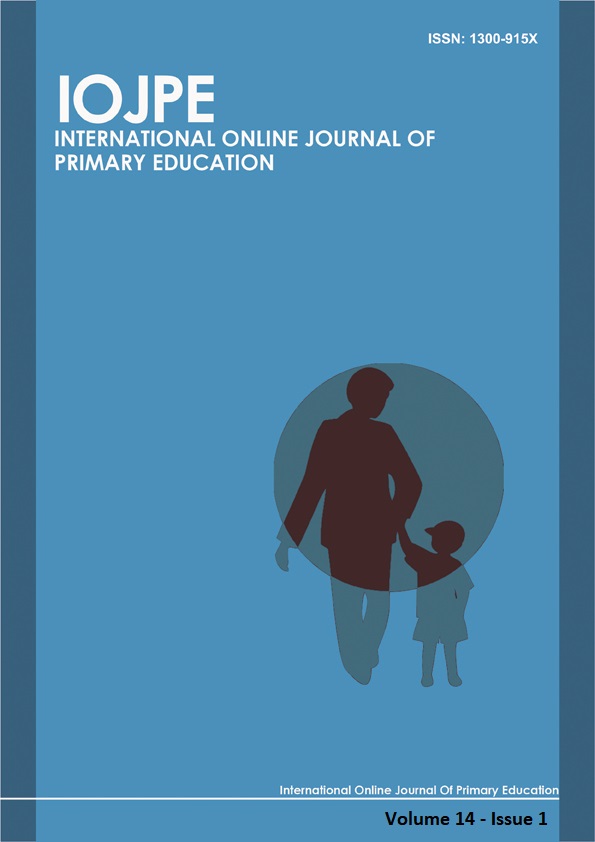ENHANCING COMPREHENSION OF EARTH SCIENCE CONCEPTS THROUGH DIGITAL ANIMATION AND INCLUSIVE DISCOURSE
Abstract
Earth science concepts can be challenging for children to grasp due to their abstract nature. This study explores the potential of 3D computer animation as an engaging and effective medium to communicate various earth science processes to young learners. By creating age-appropriate, scientifically accurate visualizations of geological features and phenomena, including tectonic plate movement and volcanic eruptions, this research aims to facilitate a deeper understanding of these concepts. Recognizing the importance of clear communication, the study emphasizes the use of inclusive discourse to accompany the animations, ensuring effective and accessible dissemination of information. This includes adapting the scientific content and terminology to make it more digestible for children and using a narrative style that fosters curiosity and engagement. The findings of this study have important implications for science education, showcasing the potential of 3D animation as a valuable tool for communicating complex scientific concepts to young learners and fostering an early interest in earth science. By adopting an inclusive discourse that bridges the gap between scientific knowledge and children's understanding, we can promote scientific literacy and create a more engaging learning experience.
Keywords: Earth science education, 3D animation, inclusive discourse, scientific comprehension, visual learning.
REFERENCES
Akbar, K. F., Damanik, F. H., Juliana, J., Akib, A., & Wibowo, F. I. (2023). Inclusive education practices: Fostering an accessible learning environment for diverse learners. Global International Journal of Innovative Research. https://doi.org/10.59613/global.v1i3.35
Aswad, M., & Wirentake, W. (2023). Creating inclusive language learning environments: addressing the needs of diverse learners. Transformational language literature and technology overview in learning (TRANSTOOL). https://doi.org/10.55047/transtool.v2i3.1360
Conrad, D., & Libarkin, J. C. (2021). Using conceptual metaphor theory within the model of educational reconstruction to identify students’ alternative conceptions and improve instruction: A plate tectonics example. Journal of Geoscience Education, 70, 262 - 277. https://doi.org/10.1080/10899995.2021.1983941
Dang, S. (2024). Empowering students through inclusive language teaching practices. Lloyd Business Review. https://doi.org/10.56595/lbr.v3i2.34
Faerm, S.,and Quinn, K. (2023) Reflective teaching practices and inclusive learning environments, in Derek Jones, Naz Borekci, Violeta Clemente, James Corazzo, Nicole Lotz, Liv Merete Nielsen, Lesley-Ann Noel (eds.), The 7th International Conference for Design Education Researchers, 29 November - 1 December 2023, London, United Kingdom. https://doi.org/10.21606/drslxd.2024.012
Franconeri, S. L., Padilla, L. M., Shah, P., Zacks, J. M., & Hullman, J. R. (2021). The science of visual data communication: What works. Psychological Science in the Public Interest, 22, 110 - 161. https://doi.org/10.1177/15291006211051956
Gold, S. D., Liepack, S., Scott, M., & Benjamin-Wise, S. (1999). Creating inclusive classrooms. Young Exceptional Children, 2, 2 - 8. https://doi.org/10.1177/109625069900200201
Lai, Y., & King, K. A. (2020). Diversity and inclusion in education. The Cambridge Handbook of Discourse Studies. https://doi.org/10.1017/9781108348195.024
Lin, L., & Atkinson, R. K. (2011). Using animations and visual cueing to support learning of scientific concepts and processes. Comput. Educ., 56, 650-658. https://doi.org/10.1016/j.compedu.2010.10.007
Metzger, E. P. (2024). Reimagining geoscience education for sustainability. Earth Science, Systems and Society. https://doi.org/10.3389/esss.2024.10116
McLure, F. I., Won, M., & Treagust, D. F. (2021). What students’ diagrams reveal about their sense-making of plate tectonics in lower secondary science. International Journal of Science Education, 43, 2684 - 2705. https://doi.org/10.1080/09500693.2021.1983922
Mountney, N. P. (2009). Improving student understanding of complex spatial-temporal relationships in Earth Sciences using computer animation and visualization. Planet, 22, 72 - 77. https://doi.org/10.11120/plan.2009.00220072
Nind, M. (2005). Inclusive education: discourse and action. British Educational Research Journal, 31, 269-275. https://doi.org/10.1080/0141192052000340251
Rex, L. A. (2003). Loss of the Creature: The Obscuring of Inclusivity in Classroom Discourse. Communication Education, 52, 30 - 46. https://doi.org/10.1080/03634520302464
Roozafzai, Z. S., & Zaeri, P. (2024 a). Digital dynamics: Exploring the intersection of AI, animation, and personalized learning. i-manager’s Journal of Educational Technology, 21(1), 1-10. https://doi.org/10.26634/jet.21.1.20850
Roozafzai, Z. S., & Zaeri, P. (2024 b). From Text to Visual: Analyzing the Influence of Graphic Design on English Language Storytelling. I-manager’s Journal on Humanities & Social Sciences, 4(2), 50-61. https://doi.org/10.26634/jhss.4.2.20847
Nygård Larsson, P., & Jakobsson, A. (2019). Meaning-making in science from the perspective of students’ hybrid language use. International Journal of Science and Mathematics Education, 18, 811-830. https://doi.org/10.1007/s10763-019-09994-z
Richmond, G., & Striley, J. (1996). Making meaning in classrooms: Social processes in small‐group discourse and scientific knowledge building. Journal of Research in Science Teaching, 33, 839-858. https://doi.org/10.1002/(SICI)1098-2736(199610)33:8%3C839::AID-TEA2%3E3.0.CO;2-X
Salehi, S., Ballen, C. J., Trujillo, G., & Wieman, C. E. (2021). Inclusive instructional practices: Course design, implementation, and discourse. Frontiers in Education. https://doi.org/10.3389/feduc.2021.602639
Salimpour, S., Tytler, R., Eriksson, U., & Fitzgerald, M. (2021). Cosmos visualized: Development of a qualitative framework for analyzing representations in cosmology education. Physical Review Physics Education Research, 17(1), 013104. https://doi.org/10.1103/PHYSREVPHYSEDUCRES.17.013104
Strømme, T. A., & Mork, S. M. (2020). Students’ conceptual sense-making of animations and static visualizations of protein synthesis: a sociocultural hypothesis explaining why animations may be beneficial for student learning. Research in Science Education, 51, 1013 - 1038. https://doi.org/10.1007/s11165-020-09920-2
Yerrick, R., & Gilbert, A. (2011). Constraining the discourse community: How science discourse perpetuates marginalization of underrepresented students. Journal of Multicultural Discourses, 6, 67-91. https://doi.org/10.1080/17447143.2010.510909
Zaeri, P., & Roozafzai, Z. S. (2024 a). Identifying as the Protagonist: Presence-inducing gameplay, linguistic elements, and self-perception in first-person narrative games. Global Journal of Design Art and Education, 14(2), 59–79. https://doi.org/10.18844/gjae.v14i2.9393
Zaeri, P., & Roozafzai, Z. S. (2024 b). Visual arts as a catalyst for social change: Communicating powerful messages. International Journal of Arts and Humanities, 6(1), 268-274. https://doi.org/10.25082/IJAH.2025.01.001
Zaeri, P., & Roozafzai, Z. S. (2024 c). Technology-enhanced art and sustainable discourse practices. International Journal of Culture and Art Studies, 8(2), 109-120. https://doi.org/10.32734/ijcas.v8i2.16654
Downloads
Published
Issue
Section
License
Copyright (c) 2025 International Online Journal of Primary Education (IOJPE) ISSN: 1300-915X

This work is licensed under a Creative Commons Attribution 4.0 International License.





